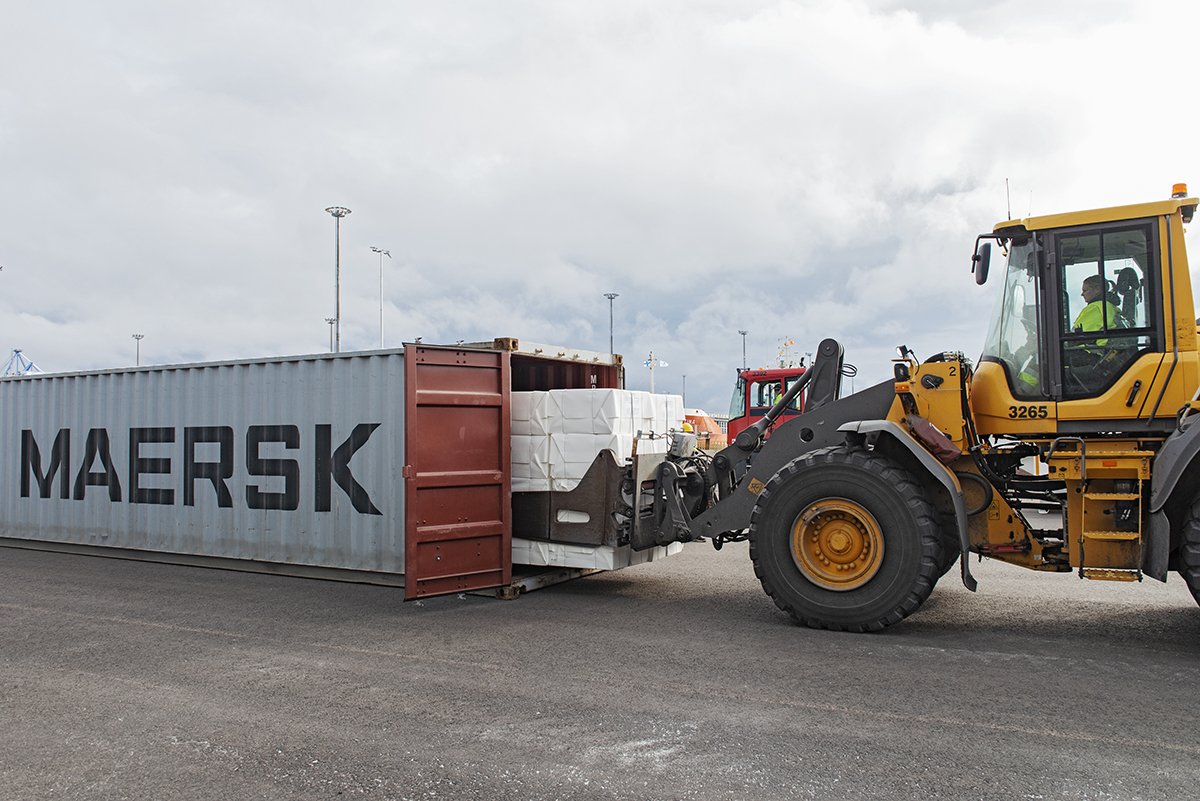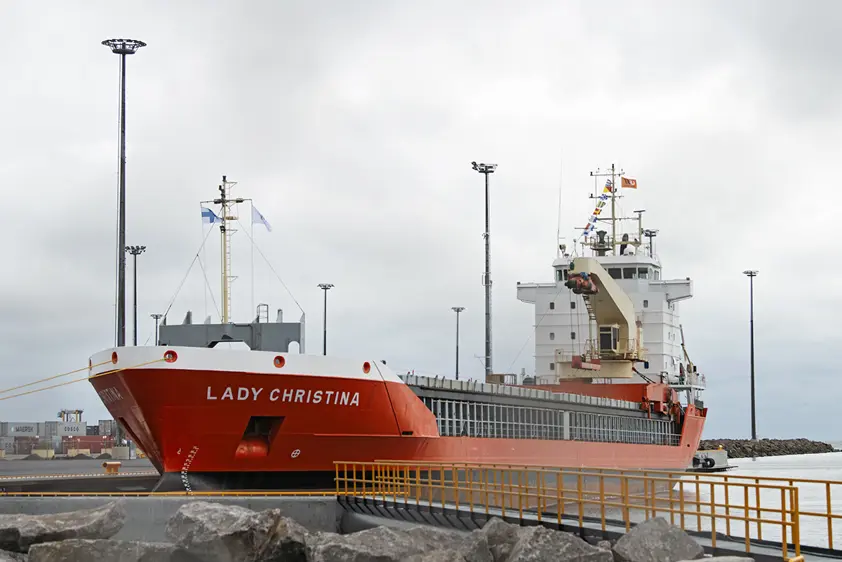The Port of HaminaKotka’s Mussalo Harbour is home to the busiest container terminal in Kotka, Finland. Now, it’s home to a state-of-the-art wood pulp terminal, too.
Thanks to a partnership between the HaminaKotka port, the port operator Steveco and UPM, the new Baltic Sea Pulp Centre opened its quays this autumn.
A practical solution
Inaugurated in October 2019, the new D-area of approximately 30-hectares has been two years in the making. In that time, the Port of HaminaKotka has invested almost EUR 40 million erecting 220 metres of quays, dredging a 15.3 metre deep basin and expanding the harbour area, Steveco has put forward EUR 8.5 million to build a modern 20,000m² warehouse a stone’s throw from the quay and UPM has signed a long-term contract to export all the pulp from its Kaukas and Kymi mills from the site.
The two mills, which are located 120 kilometres and 65 kilometres from Kotka respectively, previously exported their products from two harbours: those heading to Europe went from Hamina; those to the Far East from Mussalo. However, according to Matti Tamminen, UPM’s Head of Pulp Logistics, UPM looked into the possibility of centralising all of the volumes from these two mills in one port.
The solution? Build a dedicated UPM terminal for all volumes regardless of the export market.

UPM pulp bales in the new terminal
Location, location, location
HaminaKotka is the largest universal port in Finland and its eight harbours offer a wide range of services, from liquid and dry bulk to containers and gas. Mussalo Harbour, in particular, is Finland’s biggest container terminal exporting 1.5 million TEU per year and Tamminen notes that this was a key factor in the decision to build here. “It offers good container services to many different regions of the world and so there is a clear and obvious reason to get close to that area,” he confirms.
What’s more, Mussalo is the biggest hub for containerised wood pulp export in Finland. For example, most of the 1.6 million tonnes of wood pulp exported from HaminaKotka between January and October 2019 departed from Mussalo’s quays. As a result, UPM has established a “long-term partnership with the port and the port operator and we know they provide quality service”.
Meanwhile, Mussalo offers a number of logistics advantages. Strategically located on the Gulf of Finland, close to the Russian border, exports can easily reach European and Asian markets by sea, while internally, there is “a great rail and road network between our mills and the port”.

Loading pulp bales in the new terminal (image credit: Linda Varoma)
Preparing for the future
Logistically, the benefits of setting up shop at Mussalo are clear: domestic transport links makes it simpler to transport mill production to the port; the proximity of the warehouse to the quay enables quicker and more efficient loading; and the deep-water basin provides access to “even the biggest size of break bulk vessels”, which have a worldwide range. As a result, the terminal facilitates “cost-efficient and lean logistics” that enable UPM to “supply all around the world”.
But, crucially, the construction of the new terminal also helps UPM achieve its environmental targets. According to Tamminen, “sustainability is a key part of UPM’s corporate strategy” and the new terminal allows UPM to “cut our carbon footprint by reducing our truck transportation and replacing it with higher rail volumes”, while also streamlining its export operations from south-eastern Finland.
The new terminal offers a host of potential opportunities for the Port of HaminaKotka and UPM, while also providing the perfect conditions for further development and growth.
Text: Beetle Holloway
Main image: Linda Varoma

